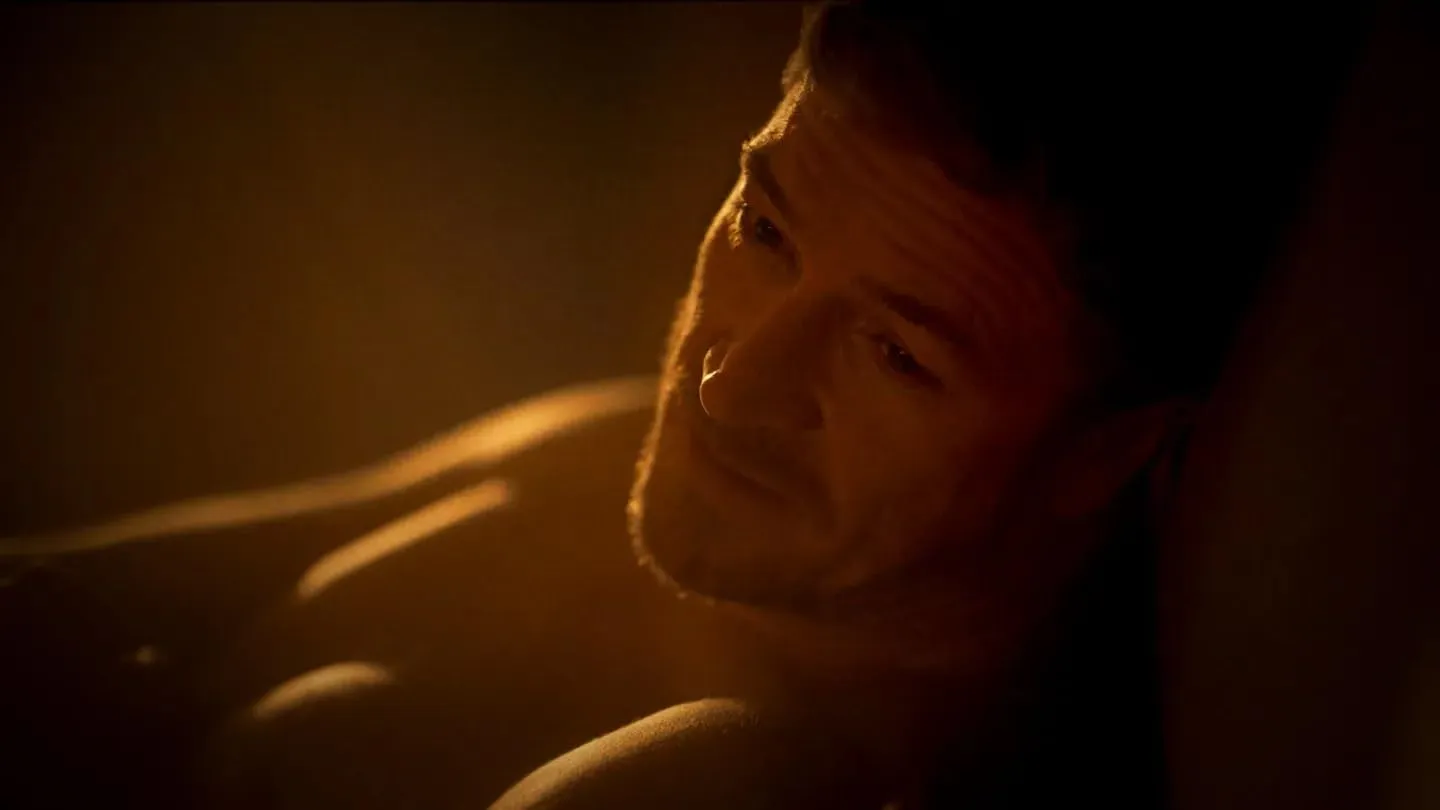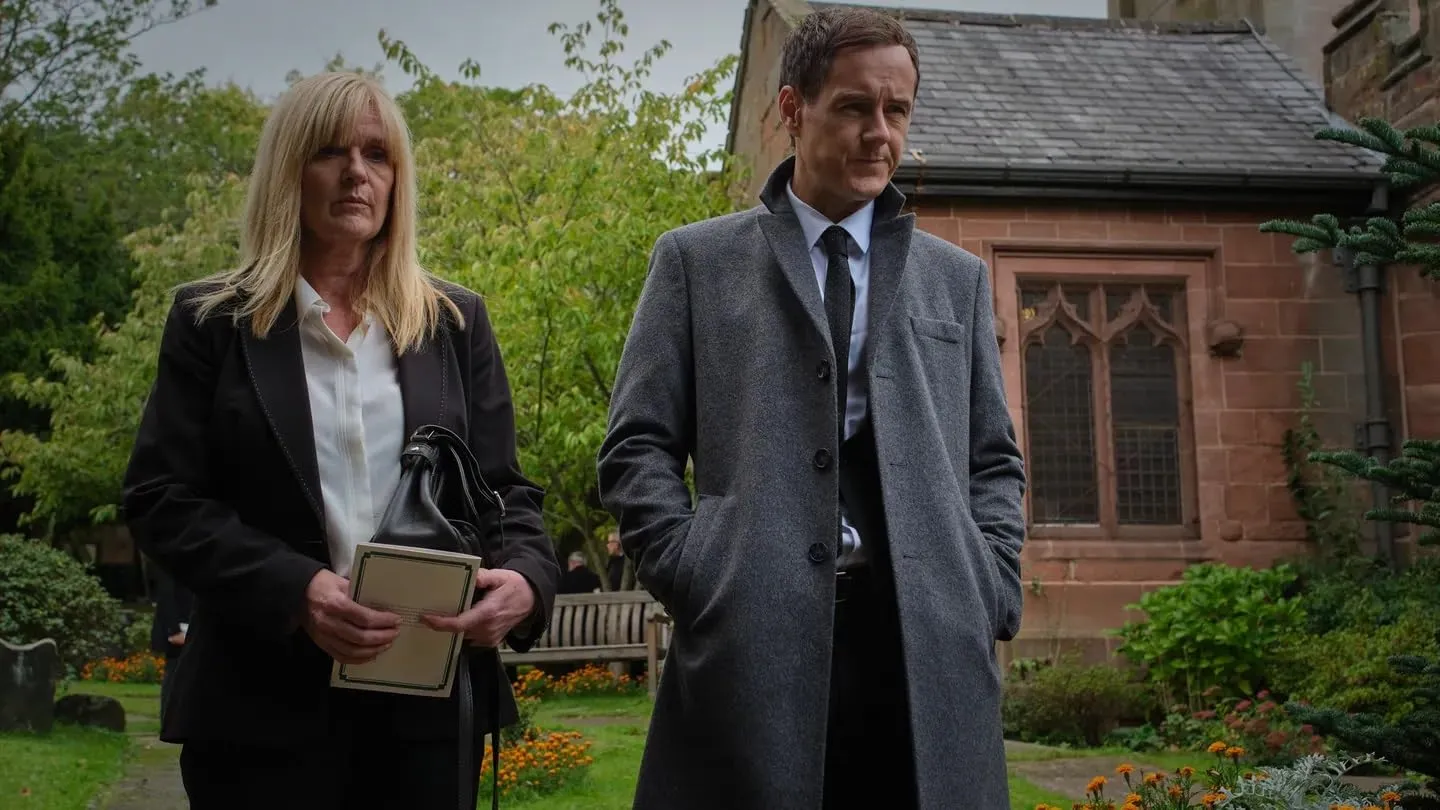The series introduces a high-stakes scenario where a young witness finds herself caught in a world of criminal intrigue and protective services. Centered around a witness protection unit, the story follows DI Liz Nyles as she manages the intense pressures of safeguarding a family whose past has landed them in danger.
The urban setting, marked by shadowy streets and stark nighttime scenes, contributes a raw visual feel reminiscent of British crime dramas that rely on moody atmospheres rather than glossy production design.
At its heart, the series pits the responsibility of shielding vulnerable individuals against the risk of internal betrayals. DI Liz Nyles is tasked with balancing the rigorous demands of her job and personal burdens, including an internal conflict that touches on secret liaisons and complicated loyalties.
This tension forms the driving force behind the narrative, keeping viewers invested in her struggle against both external threats and a system with hidden pitfalls.
The show unfolds across episodic installments that gradually build intensity. Each episode introduces elements that combine procedural investigations with an unfolding plot twist. The story steadily climbs towards a finale marked by dramatic revelations, ensuring that every installment maintains viewer interest without sacrificing character depth.
Plot and Narrative Structure
The series opens with a startling moment as 12-year-old Amy McLennan is forced awake, setting off a chain of events that quickly spirals into chaos. The sudden attack on the McLennan family serves as the spark that ignites a series of unexpected turns.
Early on, we witness hints of hidden loyalties and secret agreements that complicate the mission of protecting those under state care. As events unfold, a key betrayal emerges, sparking a series of internal probes and surprising partnerships among characters who appear to be at odds with one another.
Each twist raises questions about trust and duty, keeping the viewer engaged with a narrative that refuses to follow a predictable route.
The series maintains a brisk tempo, keeping tension alive across its episodes. Certain scenes unfold at a rapid pace, marked by sudden revelations and quick shifts in focus, while quieter moments allow the audience to absorb the weight of personal conflicts and hidden agendas.
Secondary plots, such as the covert relationship between colleagues and internal power struggles, blend seamlessly with the central story.
The show employs techniques reminiscent of films I admire, reminiscent of some French New Wave experiments that played with time and sequence. These methods offer a fresh take on a familiar framework, contributing a distinctive feel that resonates with both independent and mainstream viewers.
As the story builds toward its final act, the tension peaks during a series of direct confrontations that force characters to face long-held secrets. DI Liz Nyles finds herself in a situation where every choice carries severe repercussions.
Her decision to sacrifice personal gain for the sake of protecting others leaves an indelible mark on her character and the overall narrative. The unfolding finale does not shy away from the cost of pursuing truth, with every revelation altering the balance within the team and reshaping the responsibilities that define their roles.
Character Development and Performances
DI Liz Nyles carries a heavy burden in her role as both guardian and investigator. The series paints her as a person caught between personal desires and professional obligations.
Her character wrestles with difficult decisions that carry significant emotional weight. Moments of self-reflection reveal her inner turmoil, where quiet expressions and thoughtful pauses speak volumes about her struggle to reconcile duty with personal feelings.
I see shades of the reflective protagonists found in films by Godard or Truffaut, where each glance or subtle gesture speaks to a lifetime of conflicting loyalties. Her interactions with fellow officers expose a mix of empathy and reservation that makes her a memorable and relatable figure.
Amy McLennan emerges as a striking figure amid the chaos. Despite her young age, she displays remarkable resourcefulness and determination in the face of danger. Her performance captures the fear and courage of a child forced to confront circumstances far beyond her years.
In contrast, DS Paul Brandice is caught in a web of his own making. His involvement in a concealed relationship with Liz adds layers to his character, creating a tension that impacts both his personal life and his responsibilities.
The dynamics between Amy and Paul create a textured layer within the narrative, enriching the overall character interactions and providing moments of stark human reality.
Characters such as the aging Sid, unscrupulous officials, and shadowy figures with hidden agendas contribute to the narrative’s charged atmosphere. Sid presents a portrait of vulnerability and stubbornness that grounds the storyline in a sense of real-world frailty.
The actions of the corrupt superiors and external operatives heighten the challenges faced by the main cast. While these figures may not receive the same deep exploration as our lead, their roles in creating obstacles and conflicts serve to amplify the pressure on Liz and her team, intensifying the dramatic tension that propels the series forward.
Themes and Genre Elements
The series creates an atmosphere filled with hidden deals and secret arrangements that twist a familiar police narrative into something far more unpredictable.
Underneath the surface, characters are forced to question loyalties. Private relationships turn sour, and unseen forces make every alliance a potential risk.
The constant presence of hidden agendas turns everyday decisions into risky maneuvers. These layers of secret activity mix with instances of personal treachery, making the series a study in how concealed truths can upend a system built on trust.
At the center is DI Liz Nyles, whose professional demands place her in conflict with her personal world. Her decisions illustrate the strain that comes from trying to protect others while managing her own fragile connections. Moments in the show capture her struggle as she faces choices where no option is free of personal loss.
The pressures of a demanding career force her into sacrifices that are both painful and necessary. Her plight reminds me of moments in films by directors like Baumbach, where characters are caught between their responsibilities and their private emotions.
Family dynamics are portrayed with a focus on real human concerns. The interactions among Liz, Amy, and Sid show how the duty to keep loved ones safe can also create deep vulnerability.
The challenges of maintaining family ties under constant threat are presented through situations that make the viewer feel the heavy cost of sacrifice. The show brings a touch of realism to these relationships, capturing both tenderness and tension in a way that feels immediate.
Familiar figures such as the solitary officer and the unreliable superior appear, yet the series handles them with fresh eyes. Established character types are given unexpected twists, creating moments that surprise the audience.
This approach offers a nod to influences from French New Wave cinema while keeping the narrative accessible to a wide range of viewers.
Production Quality and Direction
The visual experience stands out right from the start. The series employs night scenes and urban settings with a precision that draws the viewer into a palpable sense of urgency.
The use of shadow and light creates moods that linger long after each scene, and the director opts for shots that capture the grit of city life without resorting to flashy tricks. This approach reminds me of the raw, observational style seen in classic French cinema.
Casting plays a significant role in shaping the narrative’s believability. DI Liz Nyles anchors the series with a performance that brings a grounded intensity, while supporting characters add layers of subtle complexity. The ensemble works together in a way that makes their relationships feel both spontaneous and deeply rooted.
Attention to detail is evident in the set design and location choices. The carefully chosen sets and period-appropriate costumes help build an authentic atmosphere, enhancing every twist in the story.
The soundtrack and sound effects further boost the tension, offering an auditory layer that enriches the overall mood. Each musical cue and ambient noise is precisely placed, ensuring that every scene resonates on multiple levels.
Use of Tropes and Genre Conventions
The series makes use of well-known character types like the no-nonsense detective, family tensions, and covert dealings within the ranks.
These elements appear as expected, forming a framework that supports a gritty crime narrative. Each instance of familiar behavior adds depth to the storytelling, creating a setting where viewers can quickly connect with the roles at play.
The show experiments with the anticipated storyline by inserting unexpected turns. Traditional plot points are paired with surprising shifts that challenge what one might expect from a standard procedural drama.
This mix of expected roles and fresh narrative twists keeps the audience attentive. The execution of these familiar elements in an unpredictable manner brings a refreshing take to a genre that often relies on set formulas, drawing a fine line between reliability and creative risk.
Final Reflections and Broader Implications
The series captures the tension of modern crime storytelling while exploring themes of trust and sacrifice that remain constant over time. Its careful arrangement of plot twists and character dilemmas leaves a mark on viewers, inviting thought about the cost of loyalty and duty.
The impact is felt not only in its high-stress narrative but also in the way personal conflicts are presented as integral parts of the wider story.
The narrative raises questions about the heavy burden of shielding sensitive truths and the strain that constant responsibility places on individuals. DI Liz Nyles’ struggles mirror a larger conversation about the pressures on those in roles of authority.
The portrayal of internal conflicts and strained family ties brings forward issues of personal sacrifice and the toll of living under continuous threat, prompting a closer look at how such challenges reflect shifts in our cultural outlook.
This series hints at new paths for television drama by blending well-known crime elements with inventive narrative choices.
Its approach points to a possible shift in how similar stories might be told in future projects, suggesting fresh experiments in storytelling that remain rooted in the real-life consequences of duty and personal loss.
The Review
Protection Season 1
This series blends familiar crime drama elements with unexpected twists and atmospheric visuals, resulting in a tense, character-driven narrative. Its exploration of duty, trust, and sacrifice is compelling, supported by strong performances and inventive storytelling. Though it occasionally leans on predictability, its balance of mainstream appeal and experimental narrative choices makes it a rewarding watch.
PROS
- Engaging narrative with surprising twists
- Strong lead performance by DI Liz Nyles
- Effective blend of crime drama and personal conflict
CONS
- Occasional reliance on familiar plot devices
- Some secondary characters remain underdeveloped






















































